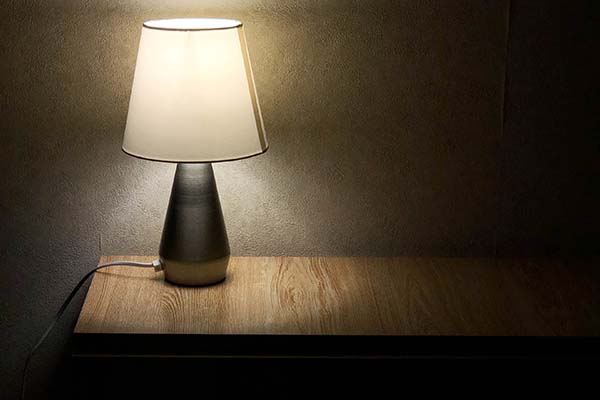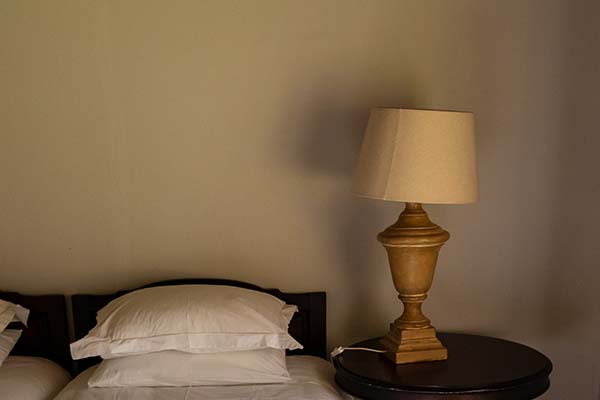Dimmer switches are simple electronic devices that are used to control the brightness position of lighting. numerous homeowners have dimmers installed to control lighting, save money on their electric bills, or as an extended feature of their security system. Dimmer switches can fluently be installed by electricians or by people who are knowledgeable about hooking up these types of devices. Keep reading and find out how a dimmer switch works.
What Is A Dimmer Switch
The dimmer switch is a type of potentiometer that adjusts the quantity of light in the illumination by controlling the current passing through the lamps. The dimmer permits the brightness of light sources such as LED, Halogen, and CFL to be added to the stage desired by way of the users.
The dimmer switch is used to manipulate the brightness of the lights in components of the home, such as the dining room or household room. They are handy for both incandescent and fluorescent lighting; buy the right sort due to the fact they are no longer interchangeable.
Advantages Of Upgrading To Dimmer Switches
There are several advantages to installing dimmer switches in your home.
Energy Savings. By dimming your lights you’ll see energy savings on your power bill because you’ll be using fewer watts when your lights are bedimmed. Every household will vary, but depending on how numerous apartments you have dimmers in and how frequently you shroud the lights, you could see 18- 20 savings on your lighting costs.
Your lights will last longer simply because they won’t be working as hard when they’re dimmed. This isn’t true of all bulbs, but you can double or triple the life of an everyday light bulb by darkening the lights.
You can control the look and sense of any room. You’ll generally want the lights bright while cooking dinner, but the living room is a different story. You may want to dim the lights while watching television but turn them back over to read a book. Dining rooms, family rooms, and bedrooms are also great places for lights with dimmers switches.
How Does A Dimmer Switch Work
The key to using a dimmer switch is knowing how to get stylish results out of the device, so it helps to understand how it works. Dimmer switches use simple electrical principles to function depending on their type.
Your basic dimmer switch simply reduces the quantum of electricity flowing through a circuit to reduce the brilliance of light. Still, ultramodern dimmer devices work.
Modern dimmers take electricity that’s flowing through a light’s circuit and switch it on and also out. When this happens, it diverts electricity from the light bulb. The quantum of electrical current flowing through the light bulb is reduced. Keep in mind that the on/ off inflow of electricity or “ switching cycle ” is controlled by your home’s AC current.
A dimmer switch changes the direction of electrical flow every time that it’s used to shroud or brighten the lights. The flow of electricity always alternates between positive and negative. When the circuit alternates it’ll automatically shut the circuit off or on.

Why Dimmer Switches Are Used
Dimmer switches create an atmosphere. Whether subdued lighting fixtures for an elegant evening meal or a work mild switched to swimsuit ambient conditions: it is the ability to adapt lights rapidly and without problems that make dimmers such an alluring option. Besides, dimmers keep strength and prolong the lifestyles of lighting fixtures elements.
Problems With Using A Dimmer Switch
Of course, dimmer switches aren’t without some drawbacks.
First, some bulb types simply don’t dim. However, you need to be more attentive to your bulb choices, If you’re using a dimmer switch. Especially with today’s advanced bulbs that cost further and last quite a bit longer, you can make an expensive mistake. By getting the wrong bulb you can end up with a dimmer switch that’s really just an on/ off switch because the bulbs simply light until they slip; they have enough electricity, and also they shut off.
Dimmer switches are also a little more delicate to install, especially if there are multiple dimmers attached to the same set of lights. However, if you have only installed on/ off switches and are working on a do-it-yourself project, this can present a bit of a learning challenge. If you ‘re using a professional electrician this isn’t a problem.
Are Dimmers Dangerous
If your bulb and dimmer switch match, dimmers aren’t dangerous. Be cautious now not to put too much electricity through them. That’s why check the manufacturer’s catalogs before shopping for dimmers.
Some of the less high-priced dimmers may additionally cause radio or TV interference. Better ones have noise-eliminating gadgets constructed into them.
Types Of Dimmer Switches
Electricians have devised different types of dimmer switches throughout the past 100 years. Dimmer switches with on/ off functions offer better control of power operation and they help to save more money, which is why these types are generally used at the moment.
Dimmer switches are created with 4 basic designs integrated, touch, slide, and rotary.
Integrated dimmer switches are frequently controlled with wireless technology, but they can also be operated manually. These types of dimmer switches are generally used with ultramodern smart home and/ or security systems.
Touch screen dimmer switches are also popular. They’re frequently installed on a wall in the home and are both handy and easy to use, plus give a modern look to a room.
Very common, slide dimmers simply allow you to control brightness by simply sliding a switch back and forth or up and down. These dimmers can also come with a button that automatically slides the device back and forth.
Eventually, there’s a rotary dimmer switch that can be manually turned to dim lights. Pretty straightforward, the dial itself is also the on/ off switch.
A Las Vegas electrician can install dimmer switches in your home. Fowler Electric can safely set up your switches and lights so that you can start saving energy and control the mood in your home.
